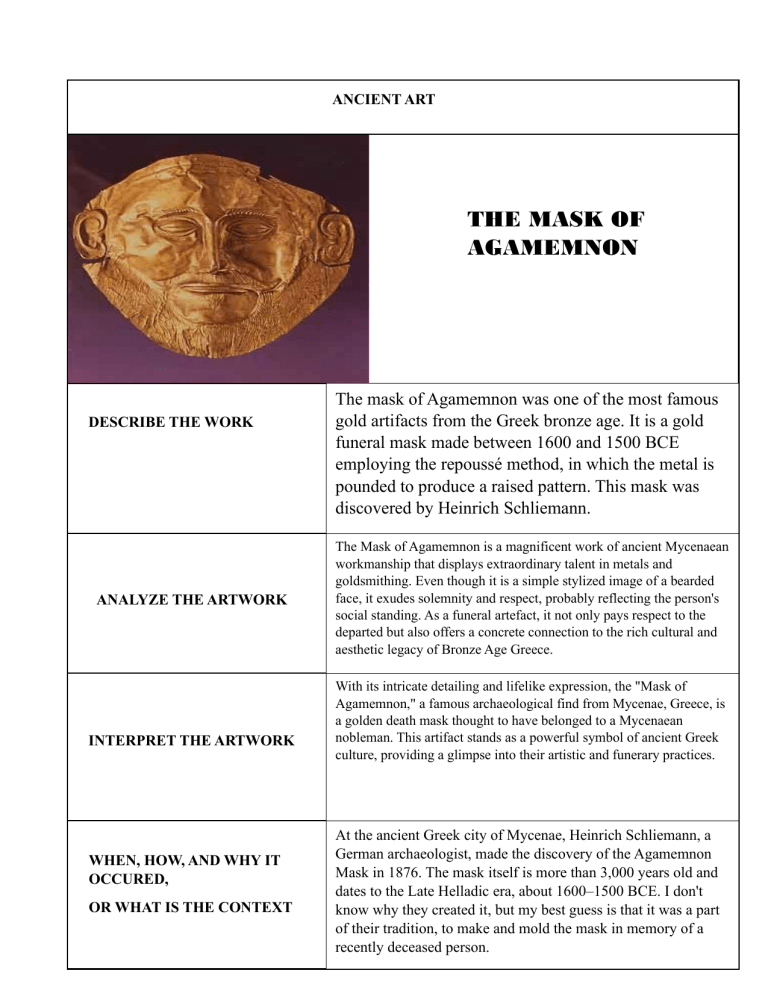
ANCIENT ART THE MASK OF AGAMEMNON DESCRIBE THE WORK ANALYZE THE ARTWORK INTERPRET THE ARTWORK WHEN, HOW, AND WHY IT OCCURED, OR WHAT IS THE CONTEXT The mask of Agamemnon was one of the most famous gold artifacts from the Greek bronze age. It is a gold funeral mask made between 1600 and 1500 BCE employing the repoussé method, in which the metal is pounded to produce a raised pattern. This mask was discovered by Heinrich Schliemann. The Mask of Agamemnon is a magnificent work of ancient Mycenaean workmanship that displays extraordinary talent in metals and goldsmithing. Even though it is a simple stylized image of a bearded face, it exudes solemnity and respect, probably reflecting the person's social standing. As a funeral artefact, it not only pays respect to the departed but also offers a concrete connection to the rich cultural and aesthetic legacy of Bronze Age Greece. With its intricate detailing and lifelike expression, the "Mask of Agamemnon," a famous archaeological find from Mycenae, Greece, is a golden death mask thought to have belonged to a Mycenaean nobleman. This artifact stands as a powerful symbol of ancient Greek culture, providing a glimpse into their artistic and funerary practices. At the ancient Greek city of Mycenae, Heinrich Schliemann, a German archaeologist, made the discovery of the Agamemnon Mask in 1876. The mask itself is more than 3,000 years old and dates to the Late Helladic era, about 1600–1500 BCE. I don't know why they created it, but my best guess is that it was a part of their tradition, to make and mold the mask in memory of a recently deceased person.

